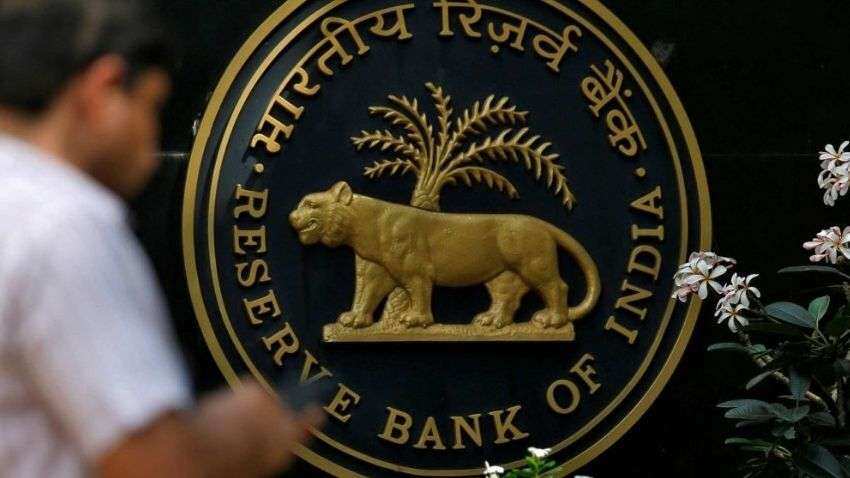Ukraine war: RBI has to think out-of-the-box to conduct bond sales to contain yields, says report
Warning that ongoing Russia-Ukraine war may derail government's record borrowing programme next fiscal amid the jittery in the market, a report has said the RBI can cushion the impact and smooth-sail the debt financing plan by adopting some innovative steps.

Warning that ongoing Russia-Ukraine war may derail government's record borrowing programme next fiscal amid the jittery in the market, a report has said the RBI can cushion the impact and smooth-sail the debt financing plan by adopting some innovative steps.
See Zee Business Live TV Streaming Below:
After the continuing mayhem in the market in the wake of the war, the government was quick to clarify that it is unlikely to borrow in March as the runaway crude prices have been pushing down US yields, which in turn pushed up domestic yields, leading to larger interest outgo on the government's close to Rs 81 lakh crore of outstanding debt.
Along with this, the Reserve Bank has a host of unconventional tools to manage government borrowings of over Rs 14.3 lakh crore in FY23 and it is important that the debt market understands such nuanced undertones and does not get into a frenzy as it is swirling currently with crude prices threatening to move beyond USD 120, Soumya Kanti Ghosh, group chief economic adviser at SBI, said in a note on Monday.
According to him, the RBI could go ahead with the proposed borrowing by leveraging all plausible alternatives within the framework through a 'dumbbell' strategy, which is also known as a 'barbell' investment strategy. This involves buying a combination of bonds with short and long maturities to offer the flexibility of short-term bonds in addition to the generally higher yields associated with longer-term bonds.
Ghosh suggested many steps, including conducting G-secs auction twice a week instead of the present practice of weekly auctions, not front-loading the same by stretching it more or less equally across the four quarters and mixing short-term T-bills with medium and long terms issuances and government on its part giving a boost to small, savings among others.
The RBI should explore a higher share of T-bills in the borrowing spreadsheet across all three-time durations by mopping up considerable additional amount under the T-bills route in all weekly auctions without disturbing the equilibrium, with a band of Rs 1,500-2,500 crore higher accretion set per week, as the market appetite and liquidity conditions in sight, Ghosh suggested.
The government may look to give a push to small savings schemes. In particular, it can give a hard push to the Sukanya Samriddhi Yojana (SSY) by encouraging fresh registrations in a mission mode, allowing one-time registrations for all leftover cases up to 12 years, he added.
The RBI can issue papers by matching the profile of redemption of government papers. Ideally, papers up to 7 years in the short term segment, 10-15 years in the mid-segment and beyond 15 years in the long term segment can be the ideal mix for meeting the borrowing appetite of market players, as per the report.
For short term segment, banks, mutual funds (debt & hybrid), general insurers and life insurers (Ulips & hybrid) are the potential players. EPFO, pension fund, other provident funds and life insurers, owing to their long liability profile, are the players in the long term segment.
The RBI has to create demand for the mid-segment to keep the pressure off the 10-year segment by doing OMOs in the mid-segment.
A quarterly borrowing calendar, in place of the half-yearly calendar on the lines of T-bill and SDL calendar, can provide the government with the flexibility to manage borrowing in line with evolving revenues and expenditures, as per the report.
The RBI should increase the liquidity in the floating rate bonds, which constitute 5.5 per cent of total G-Sec outstanding. Despite such large outstanding, market liquidity is muted here and to improve market liquidity and trading activity in this segment, RBI can earmark a portion of its OMO/OT programmes for this, it added.
Instead of front-loading government borrowings, the RBI can spread its borrowing programme in four quarters and thereby keep the initial two-quarters light or at least limited to 50 per cent of the budgeted programme, as per the report.
Auctions may be conducted twice a week instead of the current practice of weekly auction, and finally, the RBI can proactively use switch-auctions during the first two quarters, which will help market participants to take into account lower maturities during FY24 and increase demand for securities in FY23, the report suggested.
Finally, the government should go ahead and complete the listing of LIC, which is the single largest holder of G-secs at 19 per cent as against RBI's 17 per cent, at the earliest so that as the insurance behemoth may have to deploy more chunk of inflows to safer avenues domestically, it added.
Get Latest Business News, Stock Market Updates and Videos; Check your tax outgo through Income Tax Calculator and save money through our Personal Finance coverage. Check Business Breaking News Live on Zee Business Twitter and Facebook. Subscribe on YouTube.
RECOMMENDED STORIES

Fundamental picks by brokerage: These 3 largecap, 2 midcap stocks can give up to 28% return - Check targets

SBI Senior Citizen Latest FD Rates: What senior citizens can get on Rs 7 lakh, Rs 14 lakh, and Rs 21 lakh investments in Amrit Vrishti, 1-, 3-, and 5-year fixed deposits

Tamil Nadu Weather Alert: Chennai may receive heavy rains; IMD issues yellow & orange alerts in these districts

SIP+SWP: Rs 10,000 monthly SIP for 20 years, Rs 25 lakh lump sum investment, then Rs 2.15 lakh monthly income for 25 years; see expert calculations

Top 7 Mutual Funds With Highest Returns in 10 Years: Rs 10 lakh investment in No 1 scheme has turned into Rs 79,46,160 in 10 years

SIP vs PPF: How much corpus you can build in 15 years by investing Rs 1.5 lakh per year? Understand through calculations

Retirement Planning: Investment Rs 20 lakh, retirement corpus goal Rs 3.40 crore; know how you can achieve it
08:36 PM IST










 Municipal corporations need to enhance own sources of revenue: RBI report
Municipal corporations need to enhance own sources of revenue: RBI report India at forefront of digital revolution, says RBI Dy Guv Patra
India at forefront of digital revolution, says RBI Dy Guv Patra RBI issues framework for reclassification of FPI to FDI
RBI issues framework for reclassification of FPI to FDI RBI unlikely to go for immediate rate cut, despite inflation likely to cool: Ind-Ra
RBI unlikely to go for immediate rate cut, despite inflation likely to cool: Ind-Ra RBI ups domestically-held gold by another 102 metric tonnes in April to September
RBI ups domestically-held gold by another 102 metric tonnes in April to September